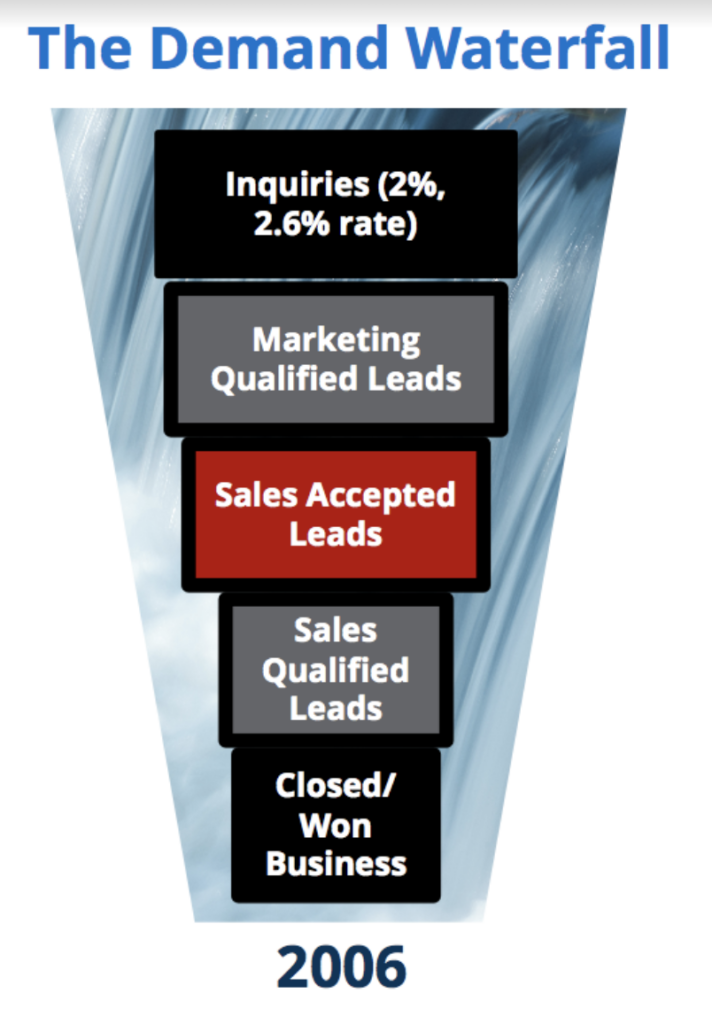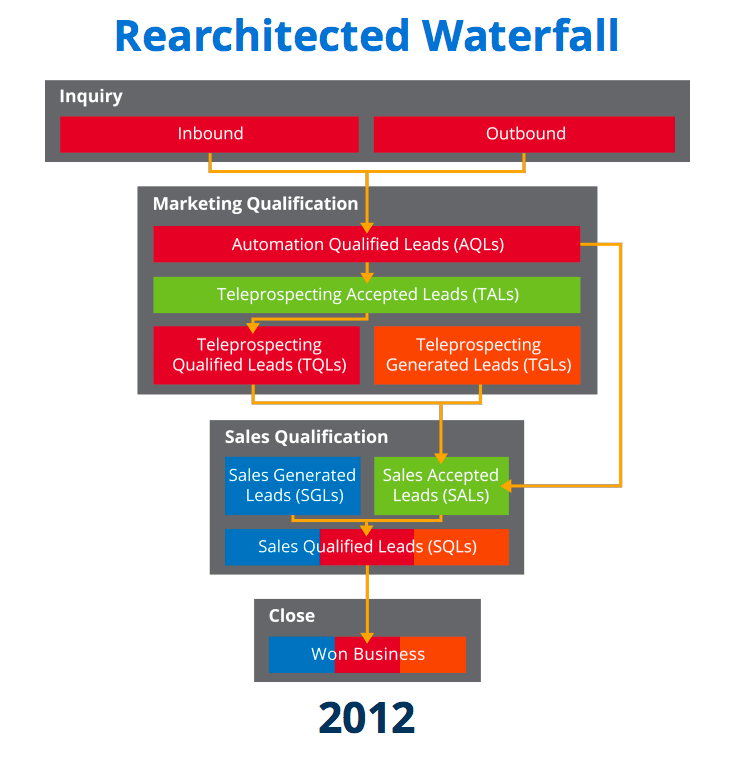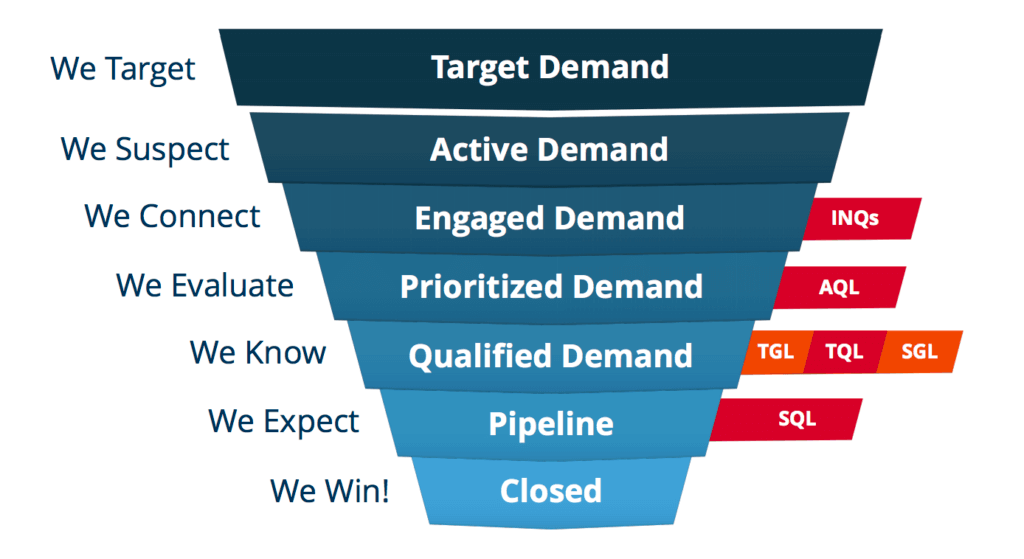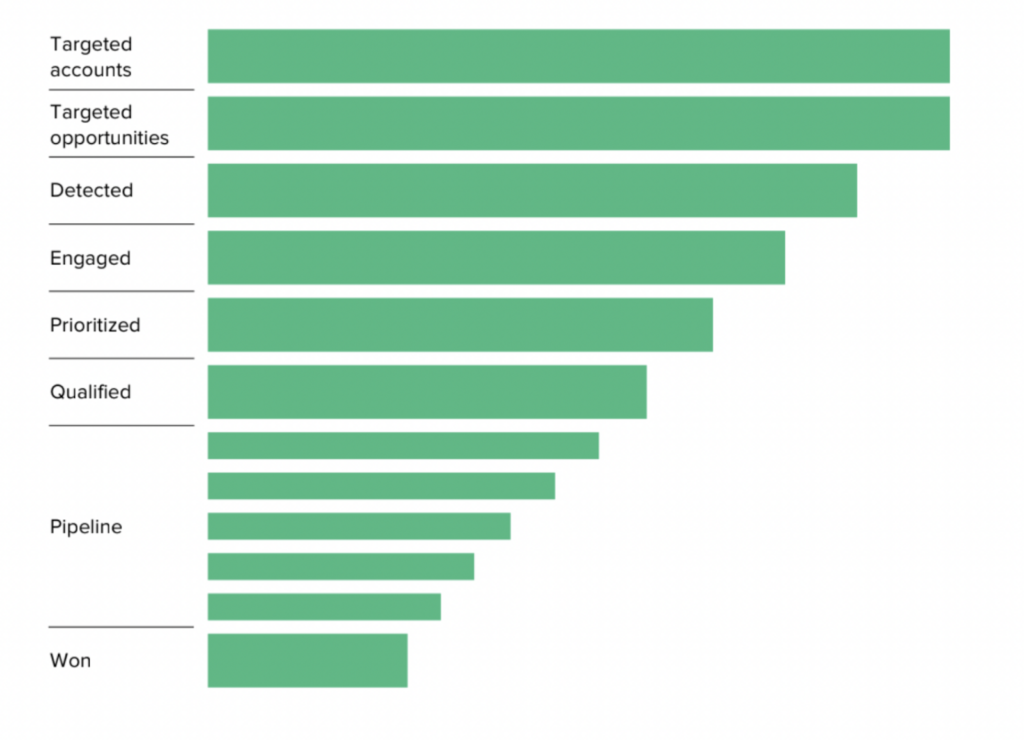What’s the Difference between Demand Unit Waterfall and B2B Revenue Waterfall
Which ABM revenue model should your SaaS company be using, the Demand Unit Waterfall or the B2B Revenue Waterfall?
If you aren’t sure which model is best, you’re not alone. But if your organization wants to be on the leading edge of RevOps thinking, you need to understand the differences between the two models and how they connect to one another.
In this piece, we’ll explore the evolution of the Demand Unit Waterfall and the B2B Revenue Waterfall. We’ll also explain why the Forrester Revenue Waterfall is the logical choice for any high-growth SaaS company using an ABM approach.
What is the Demand Unit Waterfall?
The Demand Unit Waterfall is a revenue model created by SiriusDecisions, a research, advisory, and consulting firm. Originally launched in 2006 as the Demand Waterfall, it was updated and renamed the Rearchitected Waterfall in 2012. SiriusDecisions launched a third iteration, the Demand Unit Waterfall, in 2017.



The Demand Unit Waterfall recognized that purchasing decisions are often made by buying groups rather than individuals. Identifying the members of those groups, and nurturing and scoring them collectively, leads to better demand qualification and increased close rates.
What is the B2B Revenue Waterfall?
Forrester purchased SiriusDecisions in 2019, and in 2021, they unveiled the next iteration of the Demand Unit Waterfall, now renamed the B2B Revenue Waterfall.
Forrester’s B2B Revenue Waterfall

The B2B Revenue Waterfall doesn’t compete with the Demand Unit Waterfall. It’s simply the most updated version of the model—and the one we recommend for SaaS companies using an ABM approach.
Differences Between Demand Unit Waterfall and B2B Revenue Waterfall
The most notable differentiator of the B2B Revenue Waterfall is that it has been restructured based on lived experience. Whereas the SiriusDecisions Demand Waterfall was primarily rooted in concept and theory, the Forrester Revenue Waterfall has been refined based on data provided by companies that implemented the Demand Unit Waterfall over a period of several years.
Here are a few specific ways the B2B Revenue Waterfall was updated to more closely match the experience of sales and marketing teams that use it:
More balance between sales and marketing
The Demand Unit Waterfall had a heavy focus on marketing: the sales pipeline part of the funnel was a single stage in the funnel and not given enough weight in the process. When we presented the framework to revenue leaders, sales heads often incredulously asked, “where’s the sales process?!” It was clear that the Demand Unit Waterfall primarily had marketing stages in mind. The B2B Revenue Waterfall solved this issue by expanding and adding multiple stages to reflect the complexity and duration of the sales process.
Closer alignment with the buyer’s journey
After the initial launch, Forrester soon removed the word “demand” from individual stages of the Demand Unit Waterfall in subsequent updates. In the Forrester Revenue Waterfall, they removed “demand” from the name of the framework altogether. This decision reinforces the idea that the model is about the entire buyer’s journey, not just new business. The B2B Revenue Waterfall can encompass repeat business, upsells, and cross-sells in addition to new customers.
Better representation of customer lifetime value (CLTV)
Customer lifetime value is one of the areas of obsession for SaaS companies—and rightfully so. The B2B Revenue Waterfall, with its inclusion of cross-sells, upsells, and new business, helps companies more accurately capture CLTV. The updated funnel reflects a shift in the SaaS model to focus on net dollar retention—not only account retention or product retention, but overall revenue retention. This shift allows for a more nuanced conversation around prospects and current customers, with different velocity metrics depending on the type of customer in consideration.
Interested in learning more about CLTV? Register for our upcoming webinar on Thursday, May 17th!
To learn about the Forrester Revenue Waterfall in greater detail, we recommend reading Forrester’s ebook on this topic.
Operationalizing the B2B Revenue Waterfall
A business model is only as good as its implementation. At OpFocus, we’re proud of our track record of operationalizing the Demand Unit Waterfall and B2B Revenue Waterfall, helping more than a dozen companies take this ever-evolving model from theory into practice.
Our team helped lead one of the earliest Demand Unit Waterfall implementations in Salesforce for Evariant, a healthcare SaaS company that has since been purchased by Healthgrades. Using out of the box Salesforce functionality with minimal customization, we built Evariant a scalable, flexible solution that aligned to revenue.
Early on, we were also vocal advocates for using Salesforce opportunities, rather than contacts, to align with the Demand Unit Waterfall model—the approach that Forrester recommends today. OpFocus’ involvement included conversations with Vicky Brown, Vice President at Forrester and then Research Director at SiriusDecisions, and a small-group presentation to Salesforce about how to better improve opportunity contact roles.
Adopting the B2B Revenue Waterfall will impact how you manage and measure the entire revenue stream for your company. If you go this route, you want to feel confident that you’re heading down the right path. To learn more, check out our recent “Ask Me Anything” on how SaaS companies can use ABM to elevate their RevOps Strategy.
At OpFocus, we’re passionate about aligning your Salesforce operations with your business philosophy. Contact us today to see how we can help!



